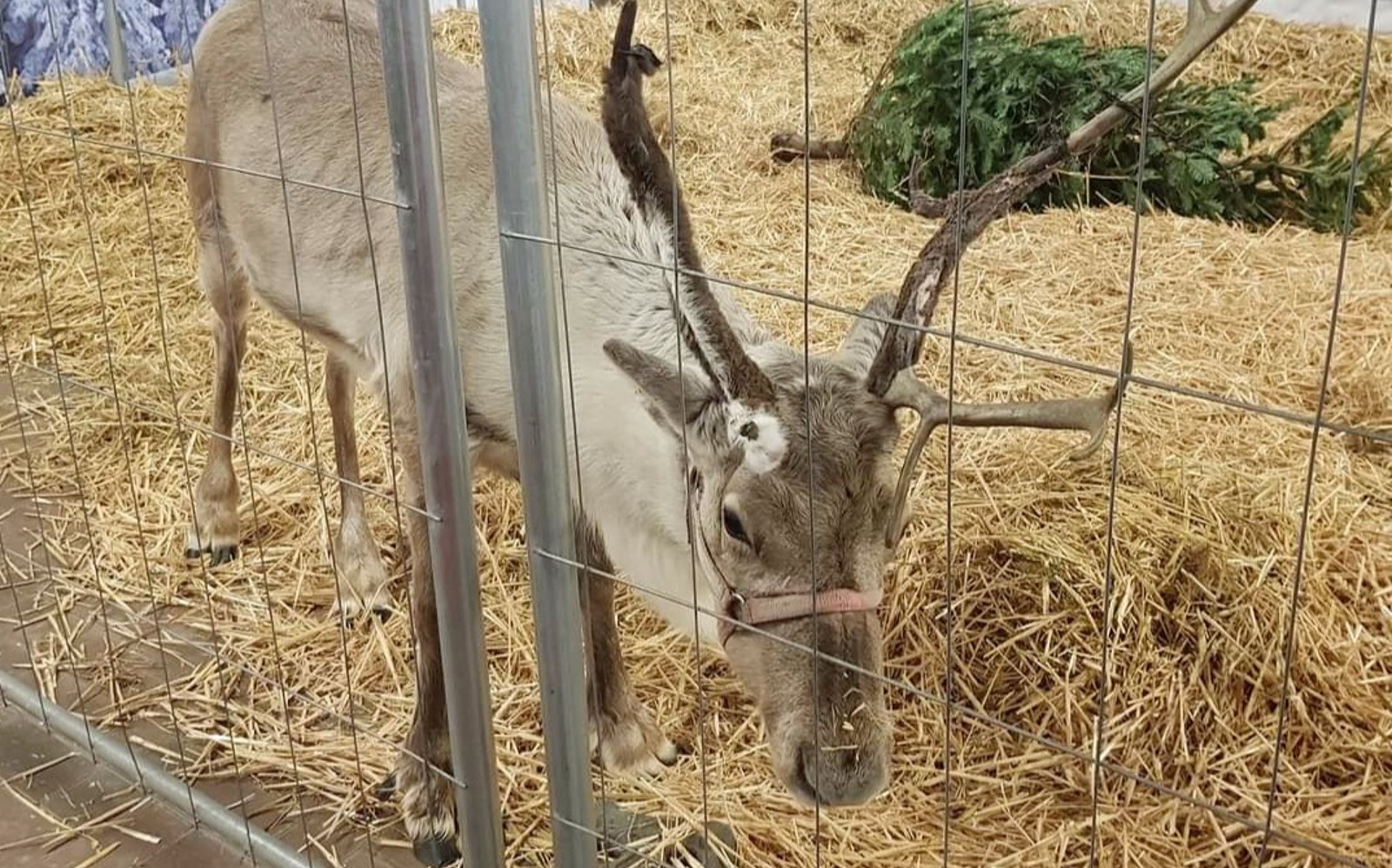The most wonderful time of the year?
THE MOST WONDERFUL TIME OF THE YEAR?
Born Free’s Junior Ambassador Hector Batemen explores the use of reindeer at Christmas events, and urges people to think twice before visiting attractions featuring live animals.
For those celebrating Christmas, maybe, but what about the captive reindeer being used as props and attractions for the festivities?
Many people include a visit to see Santa, a grotto, a Christmas event or trip to pick a Christmas tree in their celebrations and have so much fun getting into the spirit of the season. Sadly, these attractions often include Santa’s reindeer, with families excited to see Rudolph and all his friends.
There are hundreds of captive reindeer being used in this way in the UK over the holiday time, but these activities can have a serious impact on the welfare of the animals involved.

Reindeer (sometimes known as caribou) are beautiful and amazing creatures!
- Their hooves do have a sort of magic – they expand when it is warm in the summer and the ground is soft, then shrink again in the cold winter on hard ground! Wild reindeer live in artic tundra and cold forests of Canada, Russia, Scandinavia and Greenland, and their hooves have adapted to living in snow and freezing conditions. They also have hollow fur that keeps them warm by trapping body heat.
- If you listen really carefully, you can hear a ‘clicking’ sound when they walk. This is the sound made by tendons moving over bones in their feet as they walk, it doesn’t hurt them – it is a special communication so they can stay together in a blizzard.
- Their name doesn’t actually have anything to do with pulling Santa’s sleigh in reins, it is believed to be from an old Norse word ‘hreinn’ meaning deer.
- They are the only deer where males and females have antlers. Male reindeer shed their antlers in November, females not until May, so Santa’s sleigh pulling team were probably female, even Rudolph! (although maybe they could have been young males as they do keep theirs a little longer)
- Their favourite food is lichen that they graze on in the cold open tundra.
- A reindeer could have a home range of 500km, most of the time in groups of around 6 to 13 but then join together with others to form huge herds for migrations of up to 5000km!
Reindeer at Christmas
So, you might think what’s the problem if these incredible animals are only used for a couple of months over the festive period?
Well, reindeer are highly sensitive creatures. They are living, feeling beings, not lifeless animatronic creations. They are wild animals that have never been truly domesticated. They have evolved over millions of years to live in freezing, wild open spaces with many of their own kind, a prey-animal always on alert, only feeling safe in large numbers. Their bodies are built for the arctic snow and wind, not for heaters in garden centres and shopping malls. They are adapted to walking many miles in wilderness and peace, not penned up in small areas with laughing screaming humans near them, calling them for photographs or being posed with whilst being tightly held in headcollars and camera flashes going off. Often the places booking reindeer for their event will only get a couple of animals, even more stressful for these sociable creatures, and they can be transported many miles to their booking.
Due to Covid-19, many places are not holding grotto events this year, and have thankfully replaced the real reindeer with animatronic versions which still create the squeals of joy and excitement from children and smiles on the faces of the grown-ups.
But, sadly, some companies are still using real reindeer to try and draw in the Christmas crowds. I heard of a couple of places locally, so checked them out myself…
Christmas Tree Farm:
We went to visit a site set up as a Christmas tree farm, promoting Santa and his reindeer. We found a solitary reindeer in a pen, fenced with random wire panels, metal gates and string. The enclosure was muddy with two small pine trees and patches of grass. There was a broken metal chair and wooden panels with nails sticking up, although there was a small shelter at least. It was close to a main road with lorries thundering past behind the reindeer, and the site was so noisy, used for industry and lorry repairs. There was no-one watching the reindeer, I spent at least an hour watching her and didn’t see anyone else. She was thin and had a stiff rear leg making her limp. It was so distressing to see.
Garden Centre:
A garden centre has two reindeer inside their building at their Christmas attraction. They are in a small space under bright lights and heaters, standing on a tiled floor sprinkled with straw. Nothing to hide behind to get away from the people pushing against the fence, noisy and echoing with shouts and seasonal songs.
My plea to you is please don’t encourage their misuse and upsetting treatment by visiting, and let the organisers know what you feel about it.
Hopefully the cruel practice of parading these beautiful, vulnerable deer will become a legend just like Rudolph, and the funny, singing animatronic cruelty-free versions adopted by many places become the future Christmas tradition.
If you see captive wild animals being used, treated badly, kept in poor conditions or appearing distressed please do check out Born Free’s Raise the Red Flag campaign. You can report the animal and location to them, providing vital evidence to help bring these activities to an end.
Thank you, and Merry Christmas!

